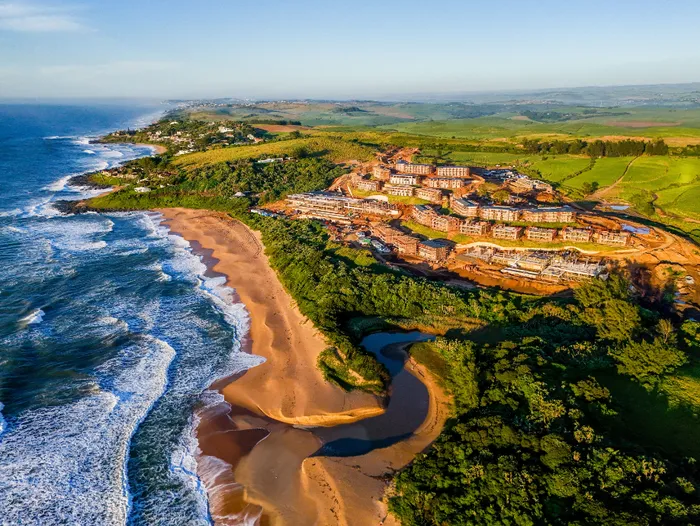
Club Med SA—a multi-billion-rand development earmarked to open its doors on KZN’s North Coast in 2026—is poised to shake up the province’s tourism landscape.
Image: Supplied
As tourism stakeholders gather in KwaZulu-Natal (KZN) to discuss the state of the sector, growth prospects will undoubtedly come into sharp focus. For a long time, tourism’s significance to the national economy has been understated, with the usual suspects—mining and agriculture—hogging the limelight.
It is a fact that tourism emerged as one of the biggest casualties of the COVID-19 pandemic, a factor that dampened its allure. Post-COVID, it’s encouraging that borders have fully reopened. Importantly, the global economy is showing green shoots as travellers with discretionary spending look for new destinations to soak up the sun. Against this background, it’s tempting yet again to ask: How significant is tourism to South Africa? What factors can help the sector recover its allure post-COVID?
Post-pandemic, tourism has become one of the fastest-growing sectors in the local economy. The latest data from Statistics South Africa (Stats SA) on international arrivals validates this view. Encouragingly, domestic tourism spending has grown by 37% since 2022, far surpassing pre-COVID levels. This shows a robust domestic market.
The total number of tourists arriving in South Africa reached 8.92 million in 2024, marking an impressive 5.1% increase compared to 2023. This is a steadfast recovery in the number of arrivals before the pandemic. Yet, as impressive as the numbers may seem, the challenge remains on how to keep this exponential growth momentum on an upward curve.
For context, tourism contributed about 8.8% to South Africa’s Gross Domestic Product (GDP). The World Travel and Tourism Council (WTTC) estimates that this sector supports nearly 1.68 million local jobs, underscoring its resilience against geopolitical and economic pressures. By boosting demand for services and products, this sector has helped stimulate local economies, especially in coastal regions such as KZN.
Remarkably, the government is not resting on its laurels—it has moved up a gear, hoping to capitalise on the growth sentiment. As part of the Tourism Sector Master Plan, the Department of Tourism is targeting to increase tourism arrivals to 15 million by 2030. This begs the question: What can South Africa do to lure tourists to its shores? This country boasts some of the best tourism destinations, including state-of-the-art infrastructure. Even better, KZN, one of South Africa’s top coastal destinations, has consistently been the torchbearer and host of the Travel Indaba currently underway.
Rightly so, tourism is one of the province’s critical drivers of economic growth, contributing R25 billion in the 2023/24 financial year and employing an estimated 173,748 people. Yet KZN continues to lag behind some of its peer provinces, such as the Western Cape, Mpumalanga, and the North West, whose famed Sun City holiday resort continues to be a magnet for both middle-income and high-net-worth local and foreign tourists.
The province boasts high-end tourism infrastructure, some of which is nestled along the pristine waters of the Indian Ocean. It is synonymous with the famous Ushaka Marine, safari parks, rolling green hills, the Drakensberg Mountain range, vast sugar cane fields, and banana plantations. It also boasts a rich history, including battlefields where local groups fought tribal wars, and notably, it is home to Howick—Nelson Mandela’s capture site. World Heritage Sites such as the Ukhahlamba Drakensberg Park and the Greater St Lucia Wetland Area are also located in this province.
Enter Club Med South Africa. As the biggest resort ever built in South Africa after Sun City, the province’s fortunes seem poised for transformation. Club Med SA—a multi-billion-rand development earmarked to open its doors on KZN’s North Coast in 2026—is set to shake up the province’s tourism landscape. For KZN, whose international visitor numbers are recovering to pre-COVID levels, this project will likely catalyse change and attract additional tourism investment in the province.
As the biggest development finance institution in Sub-Saharan Africa, the Industrial Development Corporation (IDC) is proud to be associated with the project. As one of the funding partners, this investment underscores the IDC’s commitment to socio-economic transformation, especially given the significance of this sector to KZN’s economic prospects.
With KZN’s current unemployment rate estimated at 31.2%, this project bodes well for the province’s socio-economic fortunes. The development also brings plenty of opportunities for skills development and knowledge transfer to the hospitality sector. The creation of 1,400 jobs during the construction of the project and the 600 direct and 1,500 indirect jobs that will be created when the project becomes fully operational affirm the IDC’s developmental mandate.
In addition to the upcoming Club Med SA resort, the IDC’s exposure to this sector in the local tourism industry is estimated at R1.4 billion and spans various businesses, some of which are at different stages, from new projects under construction to established hotels and lodges. Significant projects in its portfolio include:
The resilience and potential of South Africa's tourism industry are undeniable. As the sector continues to rebound from the devastating impacts of the COVID-19 pandemic, the recovery momentum must be sustained through adoption and investments in strategic and innovative initiatives. By leveraging the country's rich cultural heritage, natural beauty, and world-class infrastructure, we can attract more visitors and ensure that tourism remains a vital contributor to the national economy.
As we look to the future, it is essential to continue fostering public-private partnerships, investing in sustainable tourism projects, and enhancing the overall visitor experience. The upcoming Club Med SA resort on KZN’s North Coast has considerable potential to catalyse growth in KZN. With support from the Industrial Development Corporation (IDC) and other key stakeholders, this project is set to transform the province's tourism landscape, create jobs, and drive socio-economic development. The journey ahead is promising, and with concerted efforts, the tourism sector can maintain its growth momentum and contribute significantly to the country's economic prosperity.
Related Topics:
